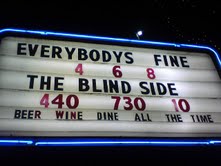As mentioned in an update to our previous post on the Prescott Mural controversy, after local protests, the Prescott school district has withdrawn their request that the mural be lightened, and both the school’s principal and the Prescott district school superintendent have publicly apologized for asking that the faces of the children be lightened (video below). I loved that their apologies were clear and to the point, and didn’t involve any excuses, blame-shifting, or minimizing – just simple statements of “We made a mistake” and “we’re sorry.” How often do we hear apologies like that from public officials anymore, not least about racially charged issues? Kudos to them for being to admit a mistake and taking steps to correct it. And kudos to the residents of Prescott who stood up against racism in their city! (h/t Huffington Post)
Meanwhile, Steve Blair’s comments (transcript here) about the mural have led to significant public criticism, his ouster from his show on a local radio station, and calls for him to resign from his position as a city councilman. Unfortunately, Councilman Blair has responded to the criticism of his comments not by taking some time to think about why they were offensive, but by repeating a number of his most problematic comments, taking the opportunity to make even more racist and privileged criticisms of the mural, and painting himself as a victim who was just trying to defend his city and “stand up for what’s right.” Because, y’all, complaining about the prominent featuring of a child of color on a mural is a matter of moral integrity. Take, for example, Blair’s defense of himself in an interview with the Prescott eNews (below, h/t Reappropriate), or his statement to the press on the controversy (video here).
Blair’s view is that he was fired simply for “asking a question.” The closest he comes to making any apology for his comments is that “the question probably was poorly worded, and in retrospect, I also admit that it was probably offensive to some,” and that he “made assumptions and then . . . took an unfounded leap of logic” that the mural was supposed to be “factual, [functional, and] representative of the community here in Prescott, AZ. And being a number cruncher in my business, I automatically assumed that the larger figure equated to the larger number of the demographics.” Huh? Not only is that a seriously weak sauce apology, it doesn’t even make sense. Would Blair really have us believe that he thinks public art depicting people is necessarily some sort of statistical representation of a city’s population?
It gets stranger:
“The mural is a big change for a historic red brick building so many of enjoy [sic] over the years. That, along with the scale of the boy central to the art, is startling at first blush. That was my mistake. Instead of jumping to conclusions, before I made the comments about the mural at all, I should have come down to speak with the artists, find out for myself what the mural meant, and what it was all about, because I still don’t believe the community knows what it was all about. For the record, nobody has come to me once to say, “hey Steve, let us explain the mural to you, and what it means, what the designer and the artist intended.” That might have helped educate me in what I obviously needed to know to help prevent such notoriety that we’ve had in this community. Instead, others have made assumptions, and jumped to conclusions on their own. They assume because they asked the question, that I was a racist and bigot.”
That right there is a mess of white privilege. Blair assumes not only that his startled and confused reaction (to put it nicely) to the mural should be validated and taken seriously, but also that it’s the job of other people to educate him about what the mural means – including what it “means” to have a child of color prominently featured on the mural – and why he shouldn’t disapprove of it (“I want somebody to tell me why I should like that. That’s what I want somebody to tell me. Why should I like that?”). He assumes that because he doesn’t know what the mural’s message is, neither does the “community,” and that because he wasn’t involved in the process of approving the mural design, neither was the “community.” One has to wonder whether for him, the “community” means the white residents of Prescott who also “can’t stand” the word “diversity.”
As Reappropriate points out, as a city councilman, Blair should have been involved in, or at least aware of, council votes to approve other eco-themed mural designs by the same committee of artists, so his complaint that decisions were made without the approval or knowledge of the “community” rings hollow. And if he was truly in the dark about the mission behind the murals, one would think a city councilman could at least pick up his local newspaper and educate himself about it.
The bottom line is, Blair and other residents of Prescott, objected to the presence of a child of color as the central figure in piece of public art, because of the (perceived) race of that child. That’s racist. And as for questioning why ethnic minorities should ever be depicted in public art? That’s privilege.
Councilman Blair, you may not be a racist or a bigot. But when you demand an explanation for why a person of color should be prominently featured in public art and and imply that depictions of POC should be completely absent from public art, what you say sounds racist.



